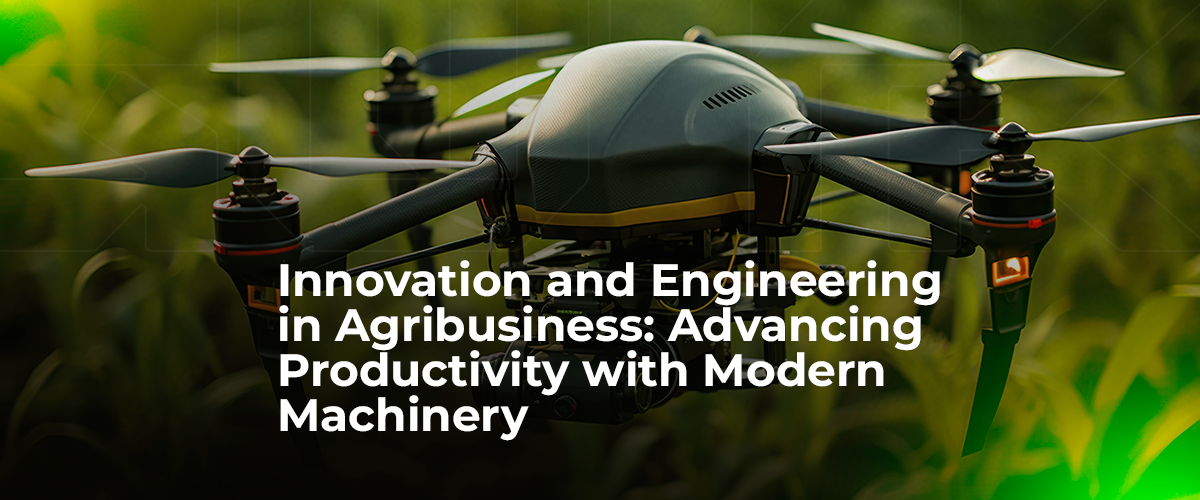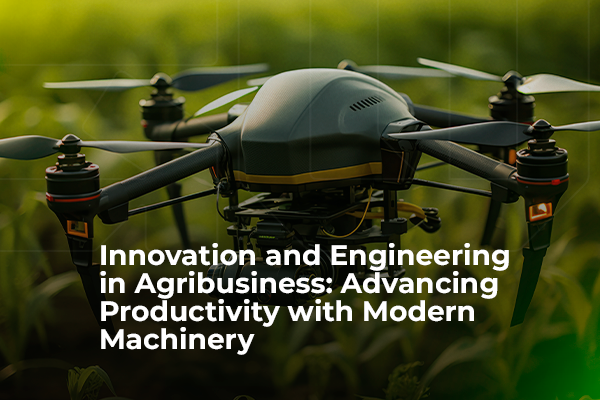

Innovation and Engineering in Agribusiness: Modern Machinery
The advancement of technology in agribusiness has driven the modernization of the sector, making operations more efficient, productive, and sustainable. Mechanical engineering and industrial automation play a key role in the development of modern agricultural machinery, optimized to increase production, reduce costs, and minimize environmental impacts.
In this article, we will explore how technological innovation and the use of specialized software in agricultural machinery engineering are revolutionizing the sector, ensuring greater precision, safety, and compliance with standards such as NR-12.
1. The Evolution of Engineering in Agribusiness
Modern agriculture increasingly depends on robust, automated machines integrated with smart software. The use of hydraulic, pneumatic, and automation systems has allowed greater control of operations in the field, optimizing everything from planting to harvesting.
Key technological advancements applied to agricultural machinery:
✅ Automation and remote control: Tractors, harvesters, and sprayers equipped with sensors and artificial intelligence.
✅ Integration with agricultural software: Real-time monitoring of productivity and soil conditions.
✅ Advanced hydraulic and pneumatic systems: Greater precision in movements, reducing energy consumption.
✅ Safety standards and compliance: Equipment designed according to NR-12 standards to ensure operational safety.
With the introduction of IoT (Internet of Things) sensors and Big Data, agricultural machines are becoming more efficient and connected, enabling data-driven decisions in real-time.
2. The Role of Software in Agricultural Machinery Engineering
Specialized software plays a crucial role in the development, operation, and maintenance of modern agricultural machinery.
Types of software used in agribusiness:
2.1 Design and Simulation Software
Agricultural machines undergo rigorous engineering tests before they go into production. CAD (Computer-Aided Design) and CAE (Computer-Aided Engineering) software are widely used to design and simulate agricultural equipment.
Popular software: SolidWorks, AutoCAD, ANSYS.
Benefits: Precision in modeling, advanced structural testing, and analysis of mechanical interferences.
2.2 Automation and Control Software
The control systems used in modern tractors and harvesters are integrated with industrial automation software, allowing for greater operational efficiency.
Example: PLCs (Programmable Logic Controllers) and SCADA for remote monitoring.
Benefits: Reduced human errors, control of input dosage, and optimization of fuel consumption.
2.3 Predictive Maintenance Software
The failure of equipment can cause significant losses in agribusiness. With the application of artificial intelligence and machine learning, predictive maintenance software identifies potential failures before they occur.
Benefits: Reduced downtime, extended machine lifespan, and savings on emergency repairs.
Software used: IBM Maximo, SAP Predictive Maintenance.
3. Compliance with Safety Standards (NR-12) in Agribusiness
NR-12 (Regulatory Standard for Safety in Machines and Equipment) sets guidelines to ensure the safety of agricultural machine operators.
Key NR-12 requirements for agricultural equipment:
-
Protection systems against mechanical accidents.
-
Automatic stop sensors in risky situations.
-
Mandatory training and qualification for operators.
Companies investing in NR-12 compliance not only avoid penalties but also ensure greater operational safety and reliability.
4. The Impact of Engineering and Technology on the Future of Agribusiness
Agribusiness is rapidly transforming with the integration of mechanical engineering, automation, and artificial intelligence. Future trends include:
-
Autonomous machines: Tractors and harvesters without operators, guided by GPS and AI.
-
Advanced precision agriculture: Use of drones and sensors for precise fertilizer application.
-
Sustainability: Reduction of fossil fuel consumption and adoption of biotechnology.
Companies adopting these innovations are a step ahead in the market, achieving greater competitiveness and productive efficiency.
Conclusion
Engineering in agribusiness is revolutionizing the way we produce food and manage operations in the field. The introduction of modern agricultural machines, automation, and specialized software not only improves efficiency but also reduces costs and enhances safety.
If your company is looking for technological solutions to optimize agricultural and industrial production, investing in innovative equipment and compliance with standards such as NR-12 is essential to ensure sustainable growth and a competitive edge.
We hope this content contributes to the development of your business. 😉
Let me know if you need further adjustments or specific formatting for your website!

